In today’s digital age, understanding how to create your own TV channel has become increasingly accessible as the entertainment industry undergoes a significant transformation due to technological advancements.
Streaming platforms like Hulu, Prime, Netflix, and numerous other online TV channels have disrupted the traditional television sector.
Would you like more information on how to start online TV channel? This blog will provide a comprehensive guide to help you start online TV channel and grow with the potential to improve your revenue.
The fast-paced evolution of technology has prompted businesses to consider launching their own TV stations on the internet, often leveraging a content delivery network for efficient and scalable distribution.
Starting an online TV channel has become a popular trend, as cable TV companies grapple with competition from various video streaming services and the need to unbundle their packages.
With the advent of smart TVs and virtual reality, consumer engagement with content has changed dramatically. This presents a prime opportunity to create your own web TV channel and capitalize on the ever-evolving digital world.
Are you looking to start your own online TV channel? This guide will walk you through everything you need to know to launch successfully and grow your revenue
What is an Online TV Channel?

An online TV channel refers to the platform on the internet through which people can watch videos. In contrast to regular cable or satellite, internet TV broadcasting permits users to watch the content on various devices like mobiles, desktops, and smart TVs. From entertainment to education, from news to niche topics, creators have the opportunity to launch their own internet TV channel and to communicate with the public not only in real-time but also on demand easily.
Why Start an Online TV Channel in 2025?

There’s no doubt that 2025 is the perfect time for online television. Not only are more people canceling their cable TV subscriptions, but they are also streaming video content from the Internet. It is the best time to start your online TV channel. It is easier to engage directly with your audience if you are a relevant content creator, brand, or broadcaster. Besides, the entry barrier has been significantly lowered, and there are tools designed to help you release OTT TV channels or develop an OTT TV app.
Should you have been interested in how to do an online TV channel, 2025 is a year of flourishing demand and the possibility of starting a new business in online TV streaming.
Benefits of Starting an Online TV Channel
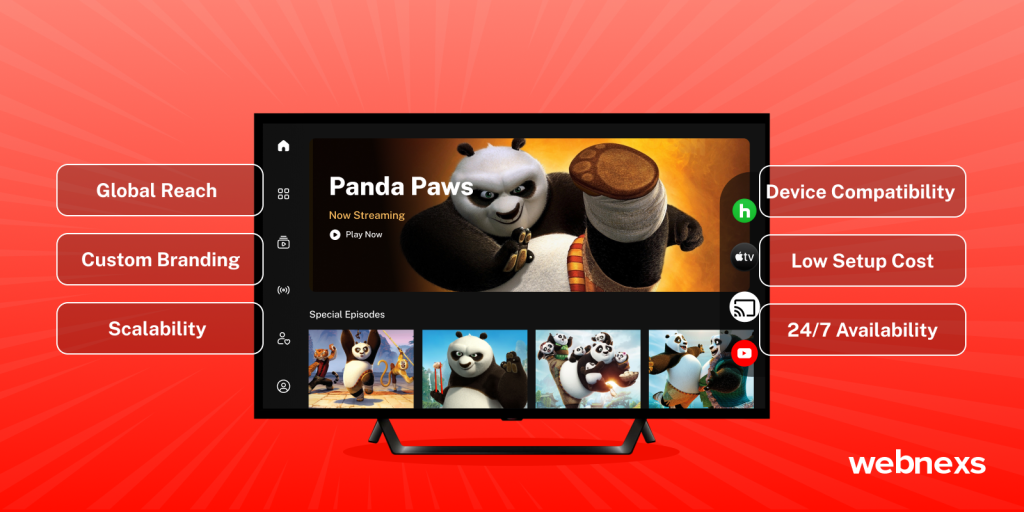
Here’s why more creators and businesses are trying to get into the online TV channel business:
Global Reach – Reach the whole world via online TV broadcasting with your content
Monetization Flexibility – Make money multiple ways like SVOD, AVOD, TVOD, or hybrid models—expand your TV streaming business.
Data-Driven Decisions – Use the numbers from analytics to tweak your content and strategy.
Device Compatibility – Your content can be accessed on the web, mobile apps, Smart TVs, etc.
Low Setup Cost – Neither have you required the high cost of infrastructure, nor found a location to get your online TV channel on air.
Custom Branding & UI – Change the look and feel of your online TV channel to suit your target audience.
24/7 Availability – Unlike typical, off-the-shelf broadcasting, your channel is always in delivery mode and VOD.
Scalability – No additional setup costs are required when you increase the number of your offerings and channels running side by side through your OTT TV app setup.
Factors to Consider When Starting an Online TV Channel Platform
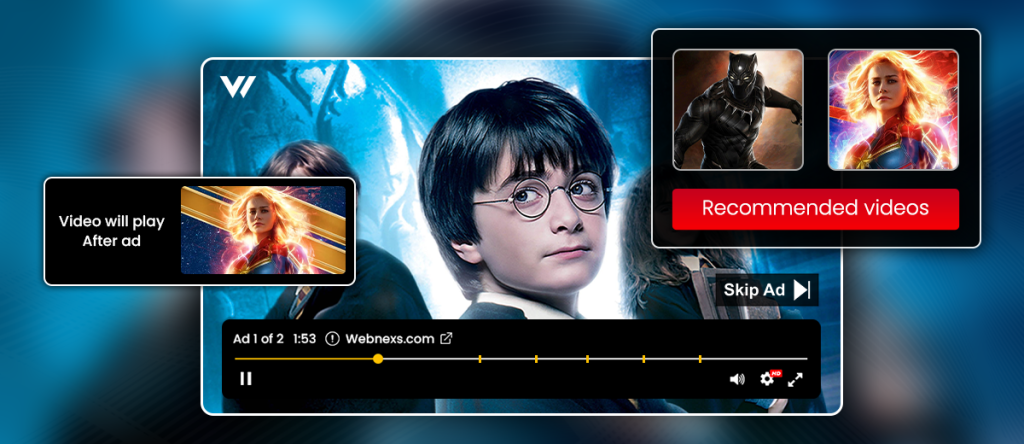
When choosing a platform for your online TV channel, there are several important factors to consider, such:
Support: Look for a platform that offers good customer support, such as 24/7 technical assistance or community forums.
Cost: Different platforms have different pricing models, so it’s important to choose one that fits within your budget.
Features: Consider what features are important to you, such as live streaming capabilities, monetization options, and analytics tools.
User Experience: Choose a platform that offers a user-friendly experience for both creators and viewers.
Planning Strategies for Your Online TV Channel
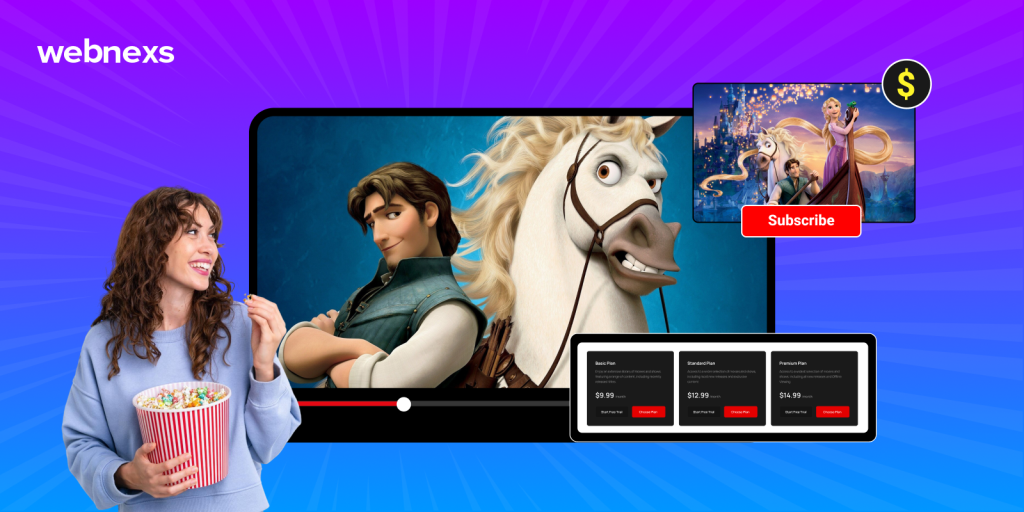
The media industry is witnessing the flourishing emergence of online TV channels, as streaming videos and television programs over the internet becomes more common.
Starting an online TV channel has become a lucrative opportunity for content publishers to generate revenue and tap into a broader audience.
This shift is driven by the increasing use of devices such as laptops and smartphones, which have replaced traditional cable television as the preferred means of entertainment.
Today, the focus is on allowing consumers to choose what they want to watch, rather than relying solely on what operators broadcast. Users are investing in advanced technology to enjoy crystal-clear, vibrant images.
This presents an excellent opportunity for your brand to create its web TV channel and offer a unique viewing experience.
The transformation of the broadcasting culture began in the early 2020s when the internet started revolutionizing the media and entertainment industry. Recent statistics show a decline in traditional TV consumption, with a 15.3% reduction among people aged 18-34 and an 8.7% decrease among those aged 35-49.
The competition in the TV streaming industry is intensifying across various categories, including TV shows, OTT platforms, movies, and sports. For instance, Netflix’s release of “The Witcher” highlighted the growing interest in high-quality content for both broadcasters and viewers.
Many content providers are now adopting 4K and Ultra HD formats to maximize profits, producing documentaries and dramas under their own online TV channels, similar to BBC Corp.
OTT platforms play a vital role in the video streaming business, particularly for content marketers.
This underscores the importance of creating exceptional online video platforms that can be accessed via various websites, mobile apps, tablets, smart TVs, and more.
The evolution of online TV allows for greater flexibility, as screens of different sizes and websites offer an array of opportunities beyond traditional cable bundles.
To grasp the vast potential of the online TV market, it is crucial to understand the future progression of television and how each channel adapts to new technological advances.
Start your online TV journey today and achieve success!
6 Important Steps to Start Online TV Channel
1. Define Your Audience
Once you have created your own online TV channel, it is crucial to know your target audience. The success of your channel depends on the type of content you produce and how well it resonates with your audience.
Knowing your target audience helps you create content that is relevant and useful to them. This ensures that they keep coming back for more, and even recommend your online TV channel to others.
Understanding your audience can also help you tailor your monetization strategy to best fit their needs.
Start by analyzing your competitors and similar channels to identify what types of content their audience engages with.
You can also use analytics tools to track your audience’s behavior, including what they watch and when they watch it.
There are several tools available to help you identify your target audience. Google Analytics is a powerful tool that can track user behavior and demographics, while social media platforms like Facebook and Twitter offer detailed insights into your followers’ interests and behavior.
2. Choose Your Niche
It is important to differentiate your channel from others and to attract a specific audience. This helps you establish a loyal fanbase that is interested in the content you produce, leading to increased engagement and revenue.
To choose a niche, consider your expertise and interests. Look for gaps in the market that you can fill with your unique perspective and style.
Research your competitors to see what they are offering, and consider how you can differentiate your channel from theirs.
Successful niches can range from cooking and travel to sports and entertainment. Some examples of successful start online TV channel niches include gaming channels like PewDiePie, beauty channels like Zoella, and food channels like Tasty.
3. Create Your Brand
Creating a brand helps establish your channel’s identity and sets you apart from competitors. Your brand should reflect your values and the type of content you produce, helping to attract and retain your target audience.
To create a brand, start by defining your mission statement and values. Choose a name, logo, and color scheme that reflects your brand’s identity.
Consistency is key, so ensure that your branding is consistent across all channels and platforms.
Successful online TV channel brands include Netflix, HBO, and Hulu. Each has established a strong identity through its branding and offers content that is consistent with its brand values.
4. Create Your Content
Creating quality content is the most important aspect of running a successful online TV channel. Your content should be engaging, informative, and relevant to your target audience.
This ensures that your viewers keep coming back for more, and even share your content with others.
There are several types of content you can create for your online TV channel, including live streams, pre-recorded shows, and behind-the-scenes content.
It is important to experiment with different formats and types of content to see what works best for your audience.
To create great content, ensure that your content is relevant, engaging, and informative. Use high-quality equipment to ensure that your videos are well-produced, and use keywords and tags to optimize your content for search engines.
5. Choose a Platform
Once you have created your content, the next step is to choose a platform to host and distribute your online TV channel.
There are several different online TV channel platforms to choose from, each with its own unique features and benefits.
6. Monetize Your Channel
Once you have chosen a platform for your online TV channel, the next step is to monetize it. There are several different ways to monetize your online TV channel, including:
How to Make Money From Online TV Channel?
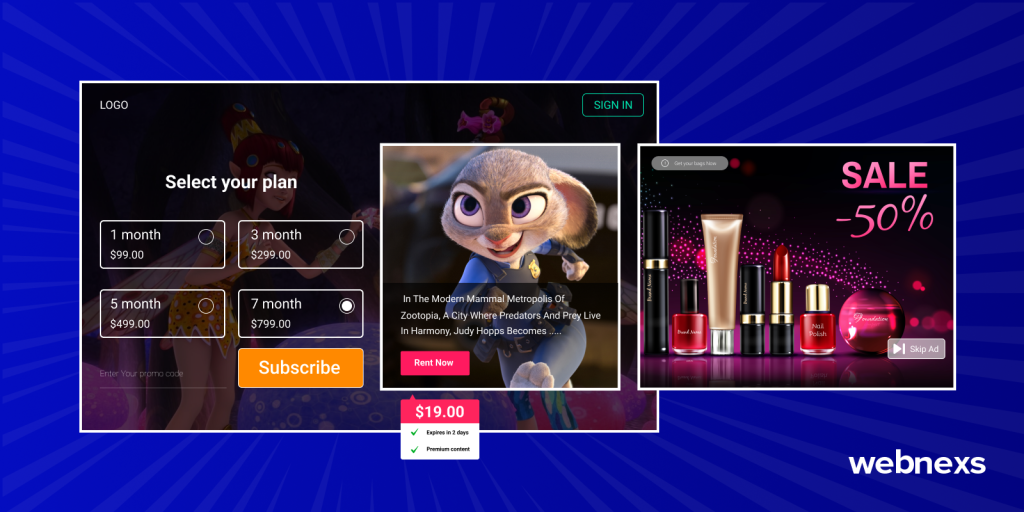
- Advertising Revenue: One of the most common ways to monetize an online TV channel is through advertising revenue. This can include pre-roll ads, mid-roll ads, and sponsored content.
- Subscription Models: Another way to monetize your online TV channel is through subscription models, where viewers pay a monthly fee to access your content.
- Pay-Per-View: You can also monetize your content by offering pay-per-view options for premium content.
Don’t wait! Build and monetize your online TV channel today.
How to Set Up Monetization on Your Online TV Channel
The process for setting up monetization on your platform will depend on the specific platform you have chosen. Most platforms have built-in monetization options, such as advertising or subscription models, that you can set up through the platform’s dashboard.
Tips for Maximizing Revenue
To maximize revenue from your online TV channel, consider the following tips:
- Create high-quality content that engages viewers and keeps them coming back for more.
- Offer a mix of free and premium content to attract a wider audience.
- Promote your channel on social media and other marketing channels to increase visibility and attract new viewers.
- Consider partnering with advertisers or sponsors to generate additional revenue.
What is the Cost of Starting An Online TV Channel?
The cost of starting an online TV channel can vary depending on your specific needs and technological requirements, which will influence how you start online tv channel effectively.
The exact amount will depend on the satellite and broadcasting requirements that align with your business objectives. Cost reduction strategies can be implemented by streamlining resources and optimizing operational efficiency.
To gain a comprehensive understanding of the market and insights into starting an online TV station, it is advisable to conduct thorough research.
Seeking professional guidance throughout the process can also help save a significant amount of money by avoiding potential pitfalls and making informed decisions.
Your online TV channel is just a few steps away!
Create Your Online TV Channel with Webnexs
When you want to begin an online TV channel, Webnexs is the one-stop solution to get everything that you require. Here’s what Webnexs is going to help you do to start your channel and dominate the segment of the market you choose to operate in:
End-to-End OTT Solution – Everything from uploading content to distribution, we can help you with all of it.
White-Label Platform – Build your own channel, fully branded, and without sharing it with anyone else.
All-In-One Features – Carry out video CMS, monetization, analytics, and user engagement management in one place.
AI-Powered Recommendations – Smart content suggestions will help you keep the audience engaged for longer.
Secure Payment Integration – Get paid through your OTT TV app anywhere in the world easily.
Multi-Screen Access – Leverage the potential of using Android TV, Fire TV, iOS, Roku, and more.
Quick Deployment – You can initially launch a TV channel within just days rather than making it take several months.
Expert Support – The Webnexs team will give you the technical and business support needed to run your online TV channel business smoothly.
No longer waiting! Start your online TV channel now with Webnexs and be the driving force of digital broadcast in the future.
Conclusion:
In the rapidly evolving landscape of online TV, it is an opportune moment to launch your own internet TV channel and expand your business prospects.
Partner with Webnexs VOD a leading provider of white-label video streaming platforms, to deliver a cutting-edge solution for your viewers.
Maximize your revenue growth by leveraging Webnexs VOD smart monetization strategies and integrate their progressive technologies to establish your presence in the online streaming industry.
By following these guidelines, you can successfully start your own TV network and reach a global audience.
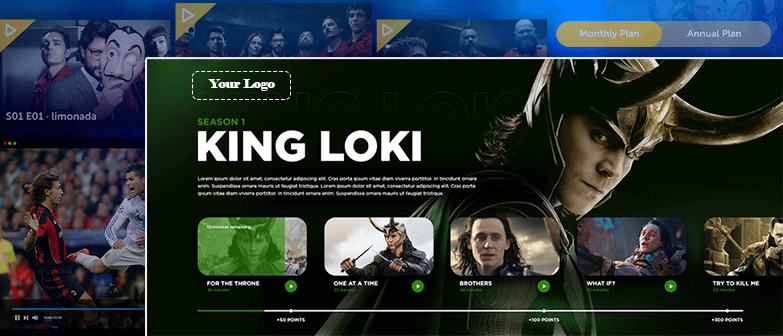


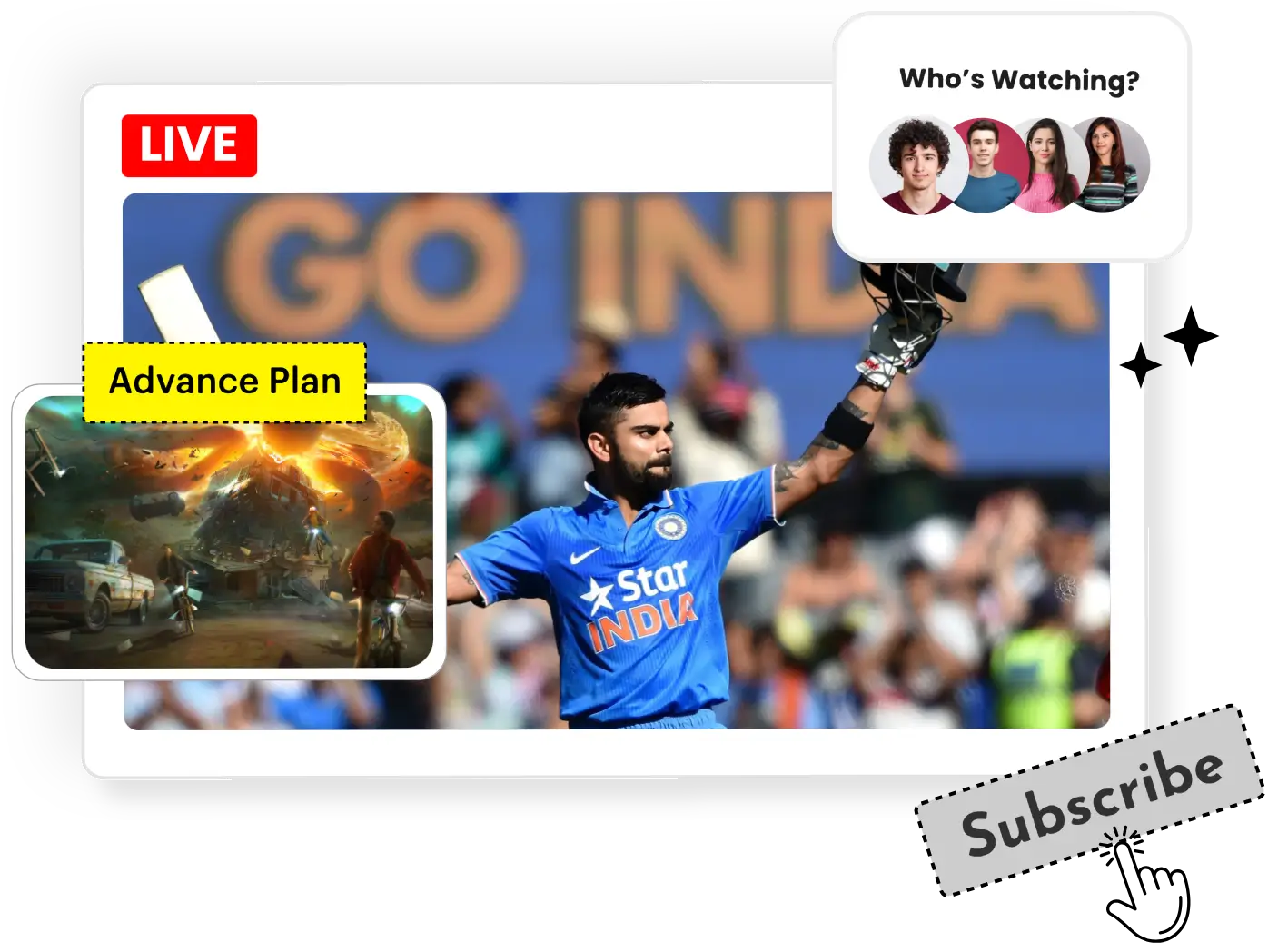
18 Responses
We are interested in starting an online TV channel where we can stream our content using an on-demand feature and implement a subscription model. Could you please provide guidance on how to initiate this process? Thank you.
I would like to request some details regarding the development of an online TV channel for our business. Could you please share the information with me via email? Thank you.
Can you please provide a detailed explanation of the procedure for adding content from multiple sources to an online TV channel?
Is it feasible to create an online TV channel specifically for the hospitality sector? Additionally, could you provide an estimate of the associated costs?
What are the key factors to consider when hosting an online TV channel?
Thank you for providing the comprehensive guide on creating an online TV channel with a wide range of feature options. I appreciate the valuable information shared
I would like to inquire about the cost of creating an online TV channel with advanced features, such as a branded platform. Could you please provide information regarding the estimated expenses?
I would like to learn about the process of how to start online tv channel and the necessary tools involved. Additionally, I’m interested in understanding the cost associated with setting up a fully functional website and mobile app that supports both Android and iOS platforms. Please provide me with the relevant information.
Hello Team,
We are an online news channel seeking to enhance our broadcasting capabilities by incorporating trending services and advanced features similar to those found in online channels. We are interested in guidance on how to start online TV channel that supports multi-device viewing. Could you please provide us with the necessary information and steps to get started? Thank you.
I am interested in offering my classes to individuals who are unable to attend our studio either due to moving out of town or other reasons. Can you please provide me with guidance on how to start online TV channel? Additionally, I would appreciate pricing information to determine if managing such a channel is feasible for me. Thank you for your assistance.
Great blog! It clearly explains how to start online TV channel with step-by-step guidance. Very informative and helpful for anyone looking to launch their own channel.
We are seeking a solution to start a tv streaming service and would like to request a demo to evaluate your program. We currently have over eighty active customers who could potentially switch to your platform, and we are eager to expand our services with your assistance. Thank you. Also, we are keen on learning how to start online tv channel.
We are seeking guidance on how to start an internet TV channel with multiple revenue streams. Can you provide us with comprehensive platform support for our TV station from beginning to end?
We are interested in launching an online TV channel similar to Plex, offering video-on-demand (VOD), free news station streaming, and sports content. As newcomers in this field, we would greatly appreciate your guidance on how to initiate an internet TV channel that incorporates both subscription-based and free streaming functionalities. Thank you in advance for your assistance.
As a startup, we aim to integrate an online TV channel into our app. We would greatly appreciate your guidance on how to initiate an internet TV channel with customized features. Additionally, we are interested in obtaining more information regarding pricing and other relevant details. Thank you for your assistance in advance.
Hello Team,
We are planning to establish an online TV channel for our TV station in the UK. Our goal is to ensure compatibility with multiple devices and to provide technical support for streaming media-based content through a CDN (Content Delivery Network). We would greatly appreciate your guidance on how to start this internet TV channel. Thank you very much.
Hello,
We are currently exploring options for starting an online TV channel for our educational organization. We would be interested in scheduling a demo call to better understand the features and pricing offered by Webnexs. Thank you for your assistance.
I’m pamela from an entertainment firm based in the US. Our plan is to launch an online TV channel that offers improved delivery options and cloud-based hosting functionalities. We are specifically looking for additional features to enhance the performance of our online TV channel and require comprehensive support. I have sent you an email regarding scheduling a demo session. Thank you for your assistance.